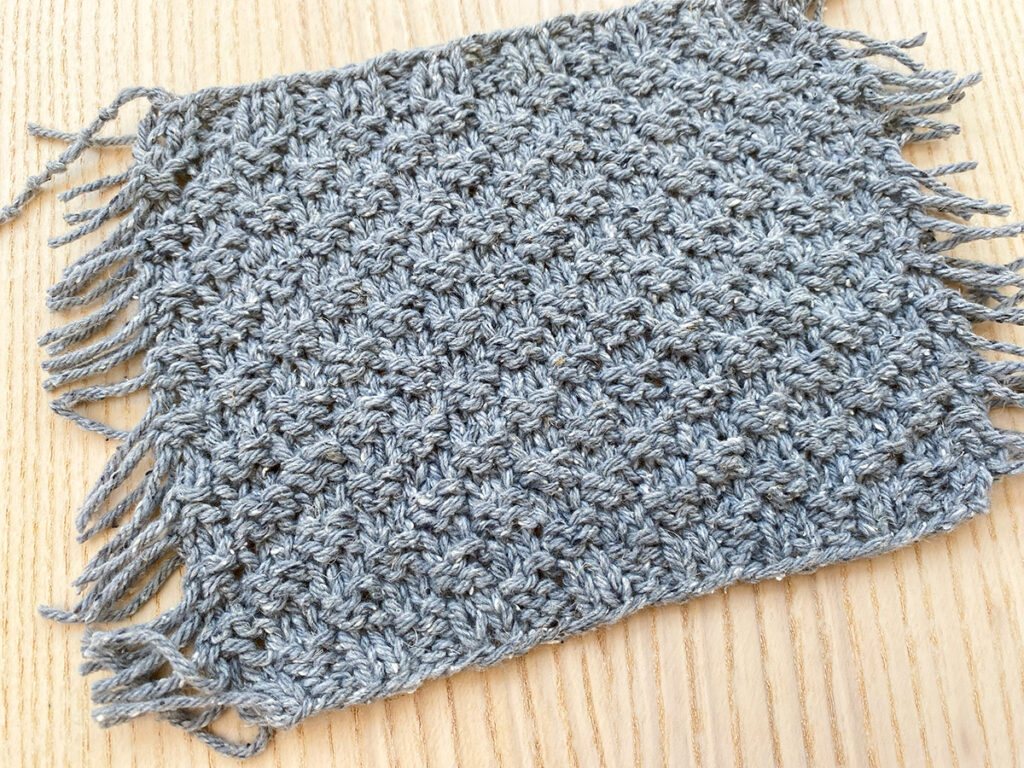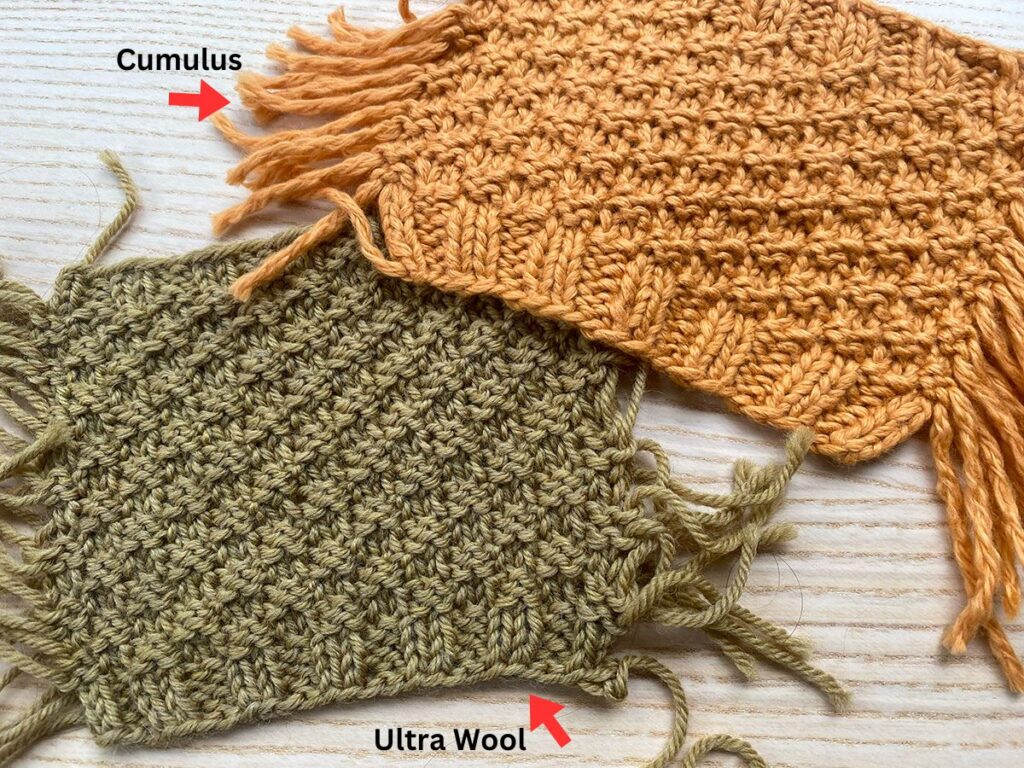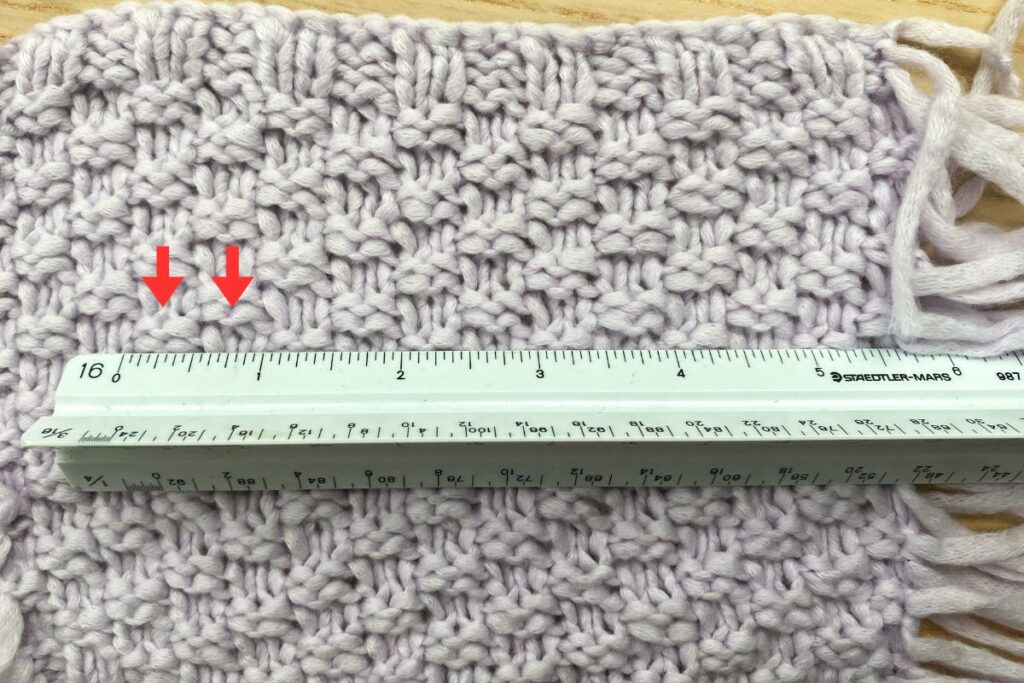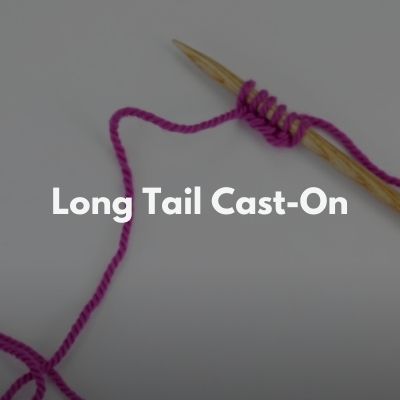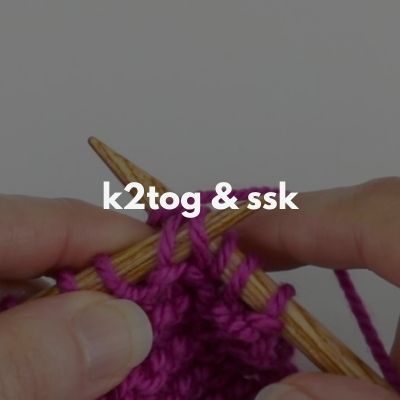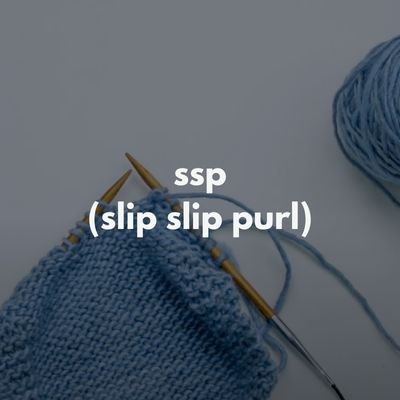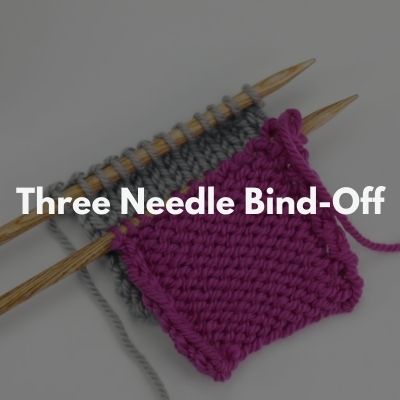Wharf Street Tips
On this page you’ll find tips and tutorials for all the techniques used in my Wharf Street vest! I review the following topics on this page:
- Picking a size
- Yarn options
- Gauge swatching in the round
- Pattern reading tip
- “Reading your knitting” with the box stitch
- How to lengthen hem to underarm
- Tips on working stitch pattern flat (after underarm divide)
- Adjusting armhole depth
- Adjusting neck depth
- Pick-up and knit armhole trim
- Pick-up and knit neckline trim
- The following knitting techniques:
- Long-tail cast-on
- Joining to work in the round
- k2tog & ssk decreases
- ssp decrease
- Three needle bind-off
Picking a Size
The Wharf Street vest has 10 sizes to pick from, all numbered 1 through 10. The most important thing to look at is the finished circumference of each size which is:
33 (37, 41, 45, 49) (53, 57, 61, 65, 69)”
You should pick a size whose finished circumference is approx. 4-9″ larger than your actual bust circumference. Whether or not you choose a size on the lower end of that range vs the higher end just depends on how you prefer to wear the vest. I’m wearing mine on the higher end of that range (I’m wearing the 3rd size – 41″) and wearing with 7.5″ of positive ease at my bust. I chose this because a) I personally like a more layered, oversized look and; b) my hips are much wider than my bust so choosing a smaller size would have made the vest look more fitted on my body and I wanted a more drapey look.
If you’re unsure which size to pick, it may also be helpful to measure the width of some vests or sweaters you have in your closet that you like the fit of and compare that to the body width listed in the schematic on the pattern. And to learn more about sizing and ease, check out my blog post about the topic here.
Yarn Options
The pattern calls for worsted-weight yarn (although some aran-weight yarns can work as well). I used the yarn Cumulus by Juniper Moon Farm which is a chainette-constructed cotton/nylon blend. This type of construction makes the yarn feel SO light and airy and it’s velvety soft too. Often you think of worsted or aran-weight cotton as feeling heavy but that is not the case at all with this yarn. The other benefit of this type of fiber construction is that it drapes beautifully in the box stitch pattern (sometimes also referred to as “double moss stitch”) and provides really clear stitch definition.
If you’re looking for similar, non-wool alternative, I swatched with 2 other yarns that I think could work well too:
And below are some other yarns that I haven’t yet swatched with but are similar in terms of the yarn/fiber construction:
- Bozzolo by Berroco
- Amira by Lang
- Far by Woolfolk
Of course other fiber types could work as well! Any type of yarn will work but the fabric created (and the look of the stitches) may just be a little different. For example, I also swatched with Berroco Ultra Wool (in green below). As you can see, the definition of the knit stitches (these are the flat stitches whereas the purl stitches are the bumpy ones) isn’t as strong as in the Cumulus yarn (in orange). Both yarns can work but the stitch definition just looks different in each.
Gauge swatching in the round
Because the body of this vest is worked in the round, then it’s important to do your swatch in the round. If you’re new to swatching in the round, check out my tutorial here. In it, I show how to swatch in the round in stockinette stitch whereas in this vest pattern you’ll want to swatch in the box stitch pattern, but the technique I work for swatching in the round is the same regardless of stitch pattern.
Specific to Wharf Street, I suggest casting-on 30 stitches (you could do more if you prefer – just make sure it’s a multiple of 4+2) and then working the swatch as follows:
- Work a k2, p2 ribbing border on the bottom for a few rounds.
- Then work the Box Stitch pattern in the round as follows:
- Rnd 1: *p2, k2; rep from * to last 2 sts, p2.
- Rnd 2: rep rnd 1.
- Rnd 3: *k2, p2; rep from * to last 2 sts, k2.
- Rnd 4: rep rnd 3.
- Rep rnds 1-4 for 5″ or so.
- Then work the same k2, p2 ribbing border at the top for a few rounds.
When measuring your swatch, the great thing with this stitch pattern is that you know the box stitch is made up of 2 stitch repeats, so as you measure you can just count “2, 4, 6…” etc.
Pattern reading tip
In the instructions for this pattern, the use of brackets is found throughout. For example, a row might state: [k2, p2] to last 2 sts, then k2.
Whatever is listed in the brackets is considered a repeat sequence. So in the above example, that should be read as: “repeat the sequence of k2, p2 over and over again until you reach the last 2 sts, then k2”.
Here’s another example from the pattern: p4, k2, [p2, k2] to last 4 sts, p4
This should be read as: “p4, then k2, then repeat the sequence of p2, k2 over and over again until you reach the last 4 sts, then p4.” So the only thing being repeated over and over again in that line is what’s in the brackets – the p2, k2.
“Reading your Knitting” with the Box Stitch
When working the body of Wharf Street, you’re just repeating the same 4 rounds over and over again. It’s helpful to know how to “read” this stitch pattern as you knit it up so that you don’t have to mark down which round you are on – you’ll just know by looking at the stitches on your needles. Let me explain more and provide some visuals.
[visuals coming soon]
How to lengthen body of Wharf Street
[info coming soon]
Working stitch pattern flat (after Underarm Divide section)
[info coming soon]
Adjusting armhole depth
[info coming soon]
Adjusting neck depth
[info coming soon]
Pick-up and knit armhole stitches
Similar to the neckline, the armhole trim is created by working the ‘pick-up and knit’ technique around the entire armhole. You’ll first pick-up and knit stitches on the left side of your underarm and then you’re instructed to pick-up and knit 3 stitches for every 4 rows around the entire armhole until you’re back at the underarm. Then you’ll pick-up and knit your rightside underarm stitches and then you’ll be done!
I have a video lesson that walks you through this entire process, plus I show you how I bind-off in pattern and weave in ends at my underarm area.
Pick-up and knit neckline stitches
The neckline ribbing in Wharf Street is created by working the ‘pick-up and knit’ technique around the neckline, and then working in rib stitch. If you’ve never done a pick-up and knit around a neckline, you can watch my video lesson below where I walk you through how I picked-up and knit for my vest sample.
Other knitting techniques
Below are links to different knitting techniques that are used in Wharf Street:




